Fisherman's rib
Reading the "Rebecca" forum regularly, I found that there seem to be some difficulties regarding fisherman's rib and how to knit it according to the "Rebecca" instructions. With this page, I want to help other knitters (particularly those from North America) by explaining how Fisherman's rib is done here in Germany, where the "Rebecca" patterns originate.
Cast on an even number of stitches as stated in the pattern or the way you prefer. I mostly do a German long-tail cast-on.
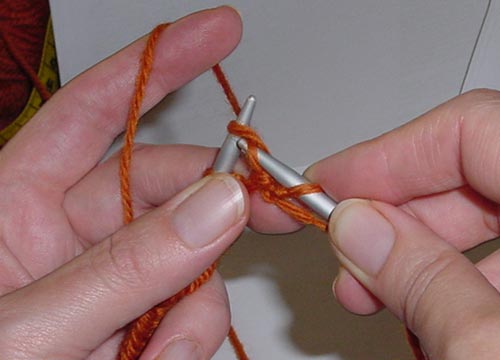
Set-up row: edge stitch (already on right needle).
Step one of pattern: Yarn in back; knit next stitch.
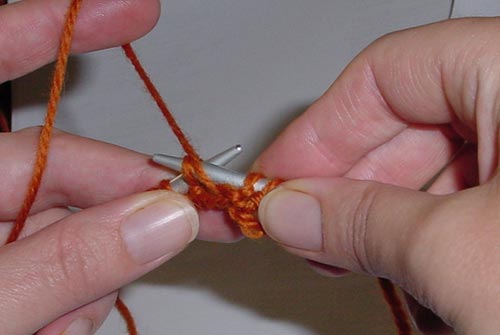
Step two of pattern: Yarn in front, slip next stitch to right needle as if to purl without knitting it. The yarn forms an "automatic" yarn-over from front right to back left over the slipped stitch.
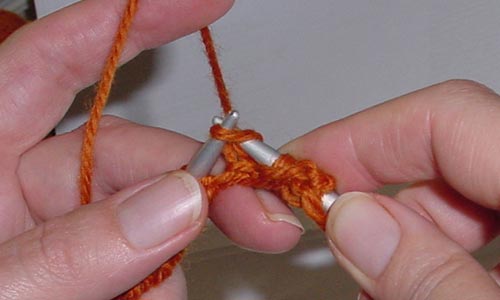
Back to step one: Yarn in back, knit the next stitch.
Repeat these two steps to end of row. End with an edge stitch. Your pattern is now set.
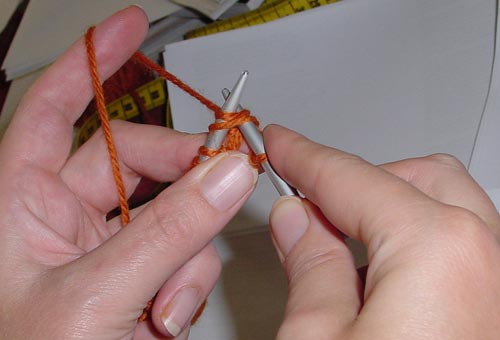
Second and every following row: Edge stitch (already on right needle), yarn in back. Knit the next stitch together with the yarn-over.
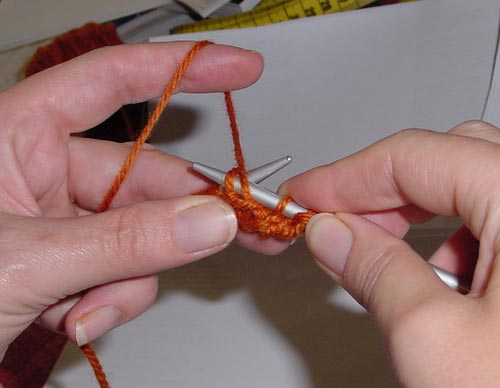
Yarn in front, slip the next stitch as if to purl, forming a yarn-over as before.
Repeat knitting the stitches which have a yarn-over and slipping those that have none, forming a new yarn-over, to end of row. End with an edge stitch.
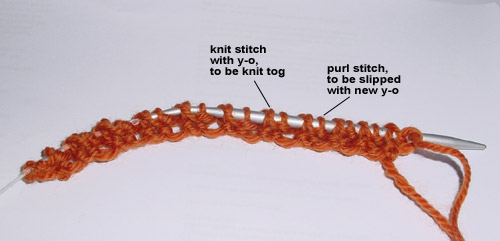
This is how your knitting should look like. You see x-shaped "double" stitches, they have a yarn-over and will be knit in the next row. The "single" stitches will be slipped with a new yarn-over. Repeat these steps throughout.
When you count your stitches, be sure not to count the yarn-overs! They are no "real" stitches because they actually belong to those stitches with which they will be knit together.
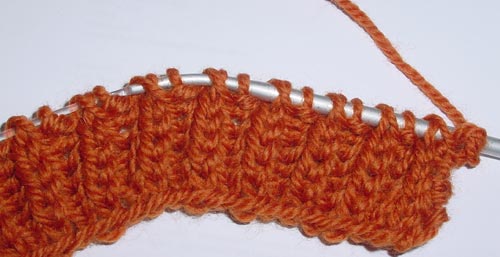
Your knitting should look like this after several rows.
It will grow quite slowly because only every second row actually shows. But it's very easy to knit, no purl stitches, only knit and slip. :-)
Should there be any questions left, feel free to use the English-speaking section of my knitting forum. Your questions will be read and answered by knitters who are familiar with using British, American, German and Scandinavian knitting instructions. Knitting is international.
Good luck!
Kerstin